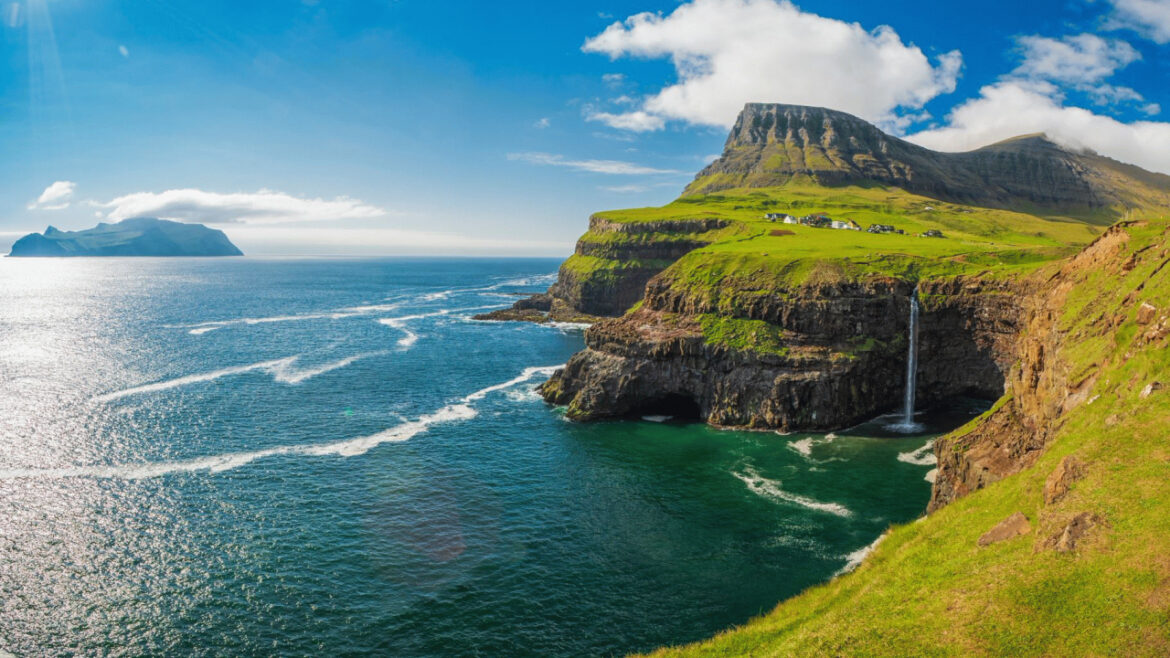The Faroe Islands, an isolated archipelago in the North Atlantic, beckons with its untouched nature, fascinating history, and a culture that blends Nordic heritage with modern lifestyle.
My grandmother comes from the Faroe Islands, specifically from Suðuroy (in Danish: Suderø), but I have never been to the Faroe Islands myself. However, I have heard and seen much about this fantastic archipelago, and therefore it’s on my bucket list which I will share here on Outdoor-air.com.
Despite never having been there, I have done research for my future trip which I share below.
The Faroe Islands consist of a larger group of smaller islands. These 18 islands offer a unique travel experience that satisfies both adventurers and those seeking peace and quiet.
Below are some of the things I have discovered so far in my research about what the Faroe Islands have to offer, from historical experiences to luxurious hotels, car rental, hiking trips, and other activities.
You can also follow me on danish on Outdoorlifes.dk.
The Island’s History
The history of the Faroe Islands stretches back over a thousand years. The first settlement is believed to have been established by Irish monks in the 6th century, but it was the Norwegian Vikings who left a lasting impression on the islands in the 9th century. Visitors can explore historic sites like Kirkjubøur, the Faroe Islands’ most important historical site.
Here you’ll find the ruins of Magnus Cathedral and a medieval farm that has been owned by the same family for over 17 generations. These places offer a fascinating insight into the islands’ past and early Christian influence.
Hotels
When it comes to accommodation, the Faroe Islands are not just limited to traditional hotels. The islands offer a wide range of options, from luxurious hotels to charming bed & breakfasts and cozy holiday homes. Hotel Føroyar in Tórshavn, the capital, offers spectacular views over the city and fjord.
With its modern architecture and comfortable rooms, it’s a perfect place to relax after a day of adventure. For those seeking a more authentic experience, Gjáargarður in the picturesque village of Gjógv offers a unique blend of Faroese hospitality and scenic views.
Car Rental in the Faroe Islands
Exploring the Faroe Islands on your own requires a car, as the public transport system only covers the main routes. Car rental is available in Tórshavn and at Vágar Airport, making it easy to get around. The road system is well-developed with tunnels, bridges, and ferries connecting the islands.
There are many companies offering car rental in the Faroe Islands, including some of the large companies that people are familiar with. However, I prefer the smaller, more local ones with knowledge of all the good routes, and here I came across Arctic Rental Cars, which offers car rental in the Faroe Islands at 2 locations. Arctic Rental Cars has offices both at the airport and in Tórshavn, which is the largest city in the Faroe Islands.
Besides Arctic Rental Cars, there are also several other companies offering car rental as you can see here.
With a car, you can freely explore the remote fjords, stunning viewpoints, and charming villages. Remember to take the weather into account, which can change quickly, and be prepared for narrow and winding roads, especially in the more isolated areas.
Hiking
The Faroe Islands are a paradise for hikers. The islands offer a wealth of hiking trails suitable for all levels, from easy walks to more challenging routes. One of the most popular routes goes to Slættaratindur, the Faroe Islands’ highest point, which offers a magnificent panoramic view.
Another recommended hike is from Gásadalur to Bøur, where you can experience the iconic Múlafossur waterfall. For a more relaxed experience, you can take the path from Tórshavn to Kirkjubøur, which combines scenic views with historical sites.
Other Things to Do in the Faroe Islands
Besides hiking, the Faroe Islands offer a range of other activities that will enrich any visitor’s experience. Birdwatching is a major attraction, especially on Mykines, where you can see thousands of puffins. The Faroe Islands are also known for their unique horses, Faroese horses, which you can experience on rides through the spectacular landscape.
Art and culture are another big part of Faroese life. Visit the Nordic House in Tórshavn to experience local art, music, and theater. The Faroe Islands also have a rich music scene with festivals like G! Festival and Summarfestivalurin, which attract international artists and music lovers from around the world.
For food lovers, the Faroe Islands are a culinary treasure trove. Try local delicacies like ræst kjøt (fermented lamb), skærpekød (dried lamb), and fresh fish dishes. Visit KOKS, a two-Michelin-starred restaurant, for an unforgettable gastronomic experience where traditional Faroese ingredients are combined with modern techniques.
Summary
Based on my research, the Faroe Islands appear to be more than just a destination; it’s an experience that can potentially enrich the soul. From its historical roots and comfortable hotels to the freedom that car rental provides, and the unforgettable hikes, the Faroe Islands offer something for every taste.
Whether you’re into action-filled adventures or quiet reflection in nature’s embrace, a visit to the Faroe Islands will be a memorable journey that definitely needs to be experienced, considering my ancestral origins from Suderø and my interest in historical sites, which last year meant that I visited Hitler’s summer house in Berchtesgaden among other places.

